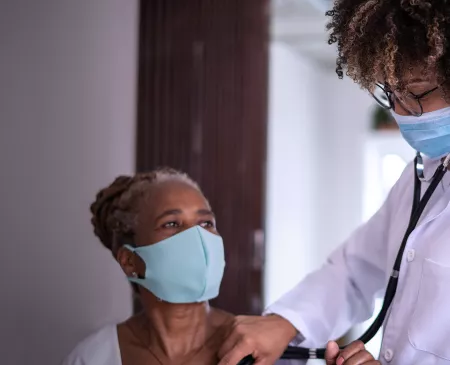Health Equity
The Buzz This Week
March is National Women’s History month, and the theme this year of “Providing Healing, Promoting Hope” acknowledges the significant contribution of women caregivers and front-line workers. As the White House noted, “Despite the progress being made, women and girls—especially women and girls of color—still face systemic barriers to full participation and wider gaps in opportunity and equality.”
Women make up the majority of the healthcare workforce—including over 85% registered and advanced practice nurses, according to the most recent Bureau of Labor Statistics data. Yet despite the female majority, one study found only 30% of the C-Suite and 13% of hospital and health system CEOs are women.
While globally men have experienced a higher rate of infection, hospitalization, and death from COVID-19, the burden of care in the healthcare system and at home has had a disproportionate social and economic impact on women throughout the pandemic. Multiple studies have shown female front-line workers have higher rates of anxiety and depression compared to male counterparts, even when adjusting for other factors. Women have had to leave employment at 2 times the rate of men and reduce their work hours at 4 times the rate of men in order to address childcare needs during the pandemic. The “shadow pandemic” has seen increasing domestic violence cases. According to the American Journal of Emergency Medicine, domestic violence cases were up over 25% globally in 2020. Hospital workplace violence has also been on the rise, with 31% of nurses facing an increase in workplace violence in October 2021, up from 22% in March 2021.
Why It Matters
Part of the solution to addressing equity in healthcare is certainly more female leadership across all roles and specialties. This step requires promoting women but also remedying the significant gender pay gap in medicine. Rand calculated the average female physician’s lost wages to be 25%, amounting to an average of $2 million in lost wages over a 40-year career. Some of the explanations for the discrepancy include women’s disproportionate time participating in organizational service (work that often is not compensated for), more time spent per patient delivering care, and unconscious bias in promotions and leadership selection. Despite the pay gap, multiple studies have shown female doctors are less likely to have readmissions and more likely to follow recommendations. A well-known study published in JAMA in 2016 estimated "that approximately 32,000 fewer patients would die if male physicians could achieve the same outcomes as female physicians every year."
Addressing the burden of care and ensuring women’s safety, emotional, and economic wellbeing is vital to a functioning healthcare system and society. Inequities in the healthcare system abound and must be remedied to reduce disparities. In clinical trials, men (predominantly white) make up the majority of study participants so information on how drugs and products may interact in women’s bodies is not as readily available. Women also may present with different symptoms for the same diagnosis. For example, in presentations of ischemic heart disease, men often have chest and arm pain, while women may have indigestion or shortness of breath. Medical training often highlights men’s symptoms as the most common, causing misdiagnosis of women presenting with different symptoms.
Resources and tools specifically for women are needed so that women feel in control of their care and that they are encouraged to engage in conversations with and ask questions of their providers. Structural solutions are also needed to address the disproportionate burden of care and mental health impacts on women. These may include on-site and/or discounted child or elder care; flexibility, including remote work options; and changes to recruitment, retention, and policies.
Related Links
Stat News
Salary Gap Between Male and Female Physicians Adds up to $2 Million in Lifetime Earnings
American Hospital Association
Providing Healing, Promoting Hope—AHA Celebrates Women Health Care Workers During National Women’s History Month
Fierce Healthcare
SXSW 2022: Why Empowering Female Patients Is Key to Addressing Gender Gaps







